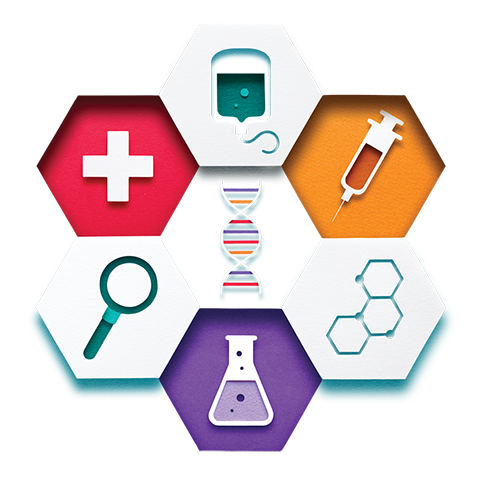Understanding How Super-Enhancers Rev Up Pancreatic Cancer Growth

Science is unpredictable, often exciting, and always dynamic, meaning that researchers continually add to their body of knowledge.
Take, for example, the fact that at one time researchers believed the majority of DNA inside our cells—the basic recipe for who we are—didn’t play much of a role and was essentially genetic trash. That’s because this DNA didn’t produce the proteins that make our bodies tick. But within this “non-coding” DNA, scientists found defective switches that can rev up cancer-causing genes.
Some non-coding regions of DNA are amplified, meaning too many copies are strung along a chromosome. These regions contain what scientists have dubbed “enhancers,” regions of DNA that, when bound by proteins, boost the expression of genes. This results in higher levels of those genes’ protein products. So-called super-enhancers—large clusters of enhancers—are the most powerful because they can simultaneously and powerfully activate many genes. These super-enhancers can be identified by their unique molecular tags and they can rapidly change the state of a cell, switching on cellular programs to encourage rapid growth or even change the cell’s identity.
In a study published in Nature Communications, researchers from the Salk Institute for Biological Studies (La Jolla, California) show how certain gene mutations trigger out-of-control growth in pancreatic cancer by activating a super-enhancer that turns on other genes. The research also showed the effectiveness of a new drug that put the brakes on pancreatic cancer growth by blocking the effects of that super-enhancer.
“My lab is interested in how genetic networks are put together, such as how a transcription gene is turned on,” explains senior author Ronald Evans, Ph.D., director of Salk’s Gene Expression Laboratory, and holder of the March of Dimes Endowed Chair. “No one has really looked at pancreatic cancer and super-enhancers in such detail before.”
Evans and his team have made significant breakthroughs in using a vitamin D derivative, in combination with immunotherapy, to help combat pancreatic cancer. “We need to rethink pancreatic cancer,” he says.
“We obviously need to improve early detection and we need to understand why so many therapies fail. We need to identify therapies that are designed for pancreatic cancer specifically, instead of using treatments for other cancers like breast or lung. We need to think differently about this disease.
“The discovery of this super-enhancer gives us both basic insight into pancreatic cancer and a new way to think of therapies.”
About the Study
Evans’ team analyzed 16 different human pancreatic cancer cell lines and identified hundreds of different super-enhancers. They pinpointed one, associated with the gene HNRNPF, that was far more active in pancreatic cancer cells than healthy cells. Then, through a series of experiments, the group showed how HNRNPF sets off a cascade of events leading to an increase in the amount of overall proteins cells were producing. The researchers went on to demonstrate that, by deleting the super-enhancer or the HNRNPF gene in the cell lines, they could slow the growth of pancreatic cancer cells by more than 80 percent.
They also found that an experimental drug targeting PRMT1, one of the proteins impacted by HNRNPF activation, could stop the growth of isolated pancreatic tumors in the lab and the growth of pancreatic tumors in mice. Additionally, the team discovered that Myc, a cancer-related gene that’s mutated in many cancers, including pancreatic cancer, can activate the HNRNPF super-enhancer. Drugs effectively blocking Myc have been hard to develop, and the new results suggest a completely different way of stopping the effects of these Myc mutations—by targeting the pathway turned on by the super-enhancer.
Finally, the researchers tested cells from a patient with pancreatic cancer and found that the HNRNPF super-enhancer was active in these cells.
“What we’ve shown is this super-enhancer is relevant in humans,” says Evans. Adds lead author Corina Antal, Ph.D., “There’s clearly more work that needs to be done, but any discovery that potentially leads to better outcomes for this terrible disease is important.”
A Grand Challenge
The National Cancer Institute and Cancer Research UK, the world’s leading funders of cancer research, partnered to launch the Cancer Grand Challenges program in 2020. Cancer Grand Challenges aims to provide multiple rounds of funding for interdisciplinary research teams from around the world whose novel ideas offer the greatest potential to advance bold cancer research and improve outcomes for people affected by cancer.
Evans is directing a team dubbed OPTIMAL. Its goal is to better understand and target the pathways involved in cancer cell plasticity to overcome therapeutic resistance. The team is comprised of scientists from nine institutions hailing from the U.S., the Netherlands, and the U.K. The team, one of 12 currently short-listed, has the chance to receive up to $25m in funding. Winners will be announced in March 2024.



